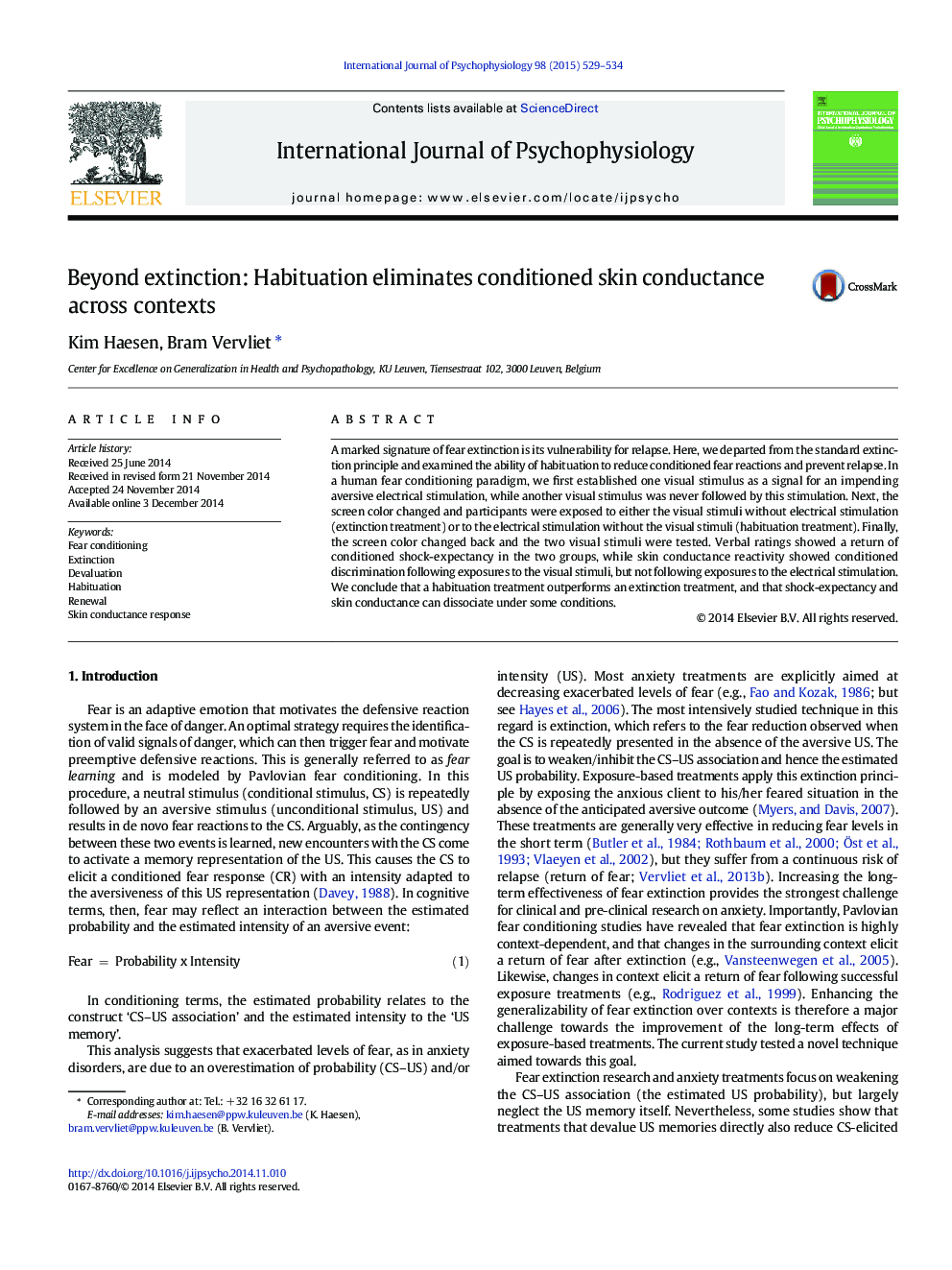| Article ID | Journal | Published Year | Pages | File Type |
|---|---|---|---|---|
| 930833 | International Journal of Psychophysiology | 2015 | 6 Pages |
•We examined the potential of US-alone exposures to reduce CS-fear across contexts.•US-alone exposures eliminated conditioned skin conductance across contexts.•US-alone exposures left US-expectancy intact across contexts.•Expectancy measures and skin conductance dissociate under some conditions.•US-exposure is an interesting model for fundamental and clinical anxiety research.
A marked signature of fear extinction is its vulnerability for relapse. Here, we departed from the standard extinction principle and examined the ability of habituation to reduce conditioned fear reactions and prevent relapse. In a human fear conditioning paradigm, we first established one visual stimulus as a signal for an impending aversive electrical stimulation, while another visual stimulus was never followed by this stimulation. Next, the screen color changed and participants were exposed to either the visual stimuli without electrical stimulation (extinction treatment) or to the electrical stimulation without the visual stimuli (habituation treatment). Finally, the screen color changed back and the two visual stimuli were tested. Verbal ratings showed a return of conditioned shock-expectancy in the two groups, while skin conductance reactivity showed conditioned discrimination following exposures to the visual stimuli, but not following exposures to the electrical stimulation. We conclude that a habituation treatment outperforms an extinction treatment, and that shock-expectancy and skin conductance can dissociate under some conditions.
